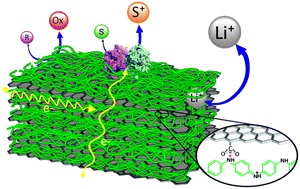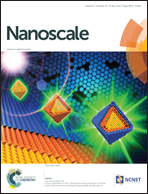Recent developments in the layer-by-layer assembly of polyaniline and carbon nanomaterials for energy storage and sensing applications. From synthetic aspects to structural and functional characterization
Abstract
The construction of hybrid polymer–inorganic nanoarchitectures for electrochemical purposes based on the layer-by-layer assembly of conducting polymers and carbon nanomaterials has become increasingly popular over the last decade. This explosion of interest is primarily related to the increasing mastery in the design of supramolecular constructs using simple wet chemical approaches. Concomitantly, this continuous research activity paved the way to the rapid development of nanocomposites or “nanoblends” readily integrable into energy storage and sensing devices. In this sense, the layer-by-layer (LbL) assembly technique has allowed us to access three-dimensional (3D) multicomponent carbon-based network nanoarchitectures displaying addressable electrical, electrochemical and transport properties in which conducting polymers, such as polyaniline, and carbon nanomaterials, such as carbon nanotubes or nanographene, play unique roles without disrupting their inherent functions – complementary entities coexisting in harmony. Over the last few years the level of functional sophistication reached by LbL-assembled carbon-based 3D network nanoarchitectures, and the level of knowledge related to how to design, fabricate and optimize the properties of these 3D nanoconstructs have advanced enormously. This feature article presents and discusses not only the recent advances but also the emerging challenges in complex hybrid nanoarchitectures that result from the layer-by-layer assembly of polyaniline, a quintessential conducting polymer, and diverse carbon nanomaterials. This is a rapidly developing research area, and this work attempts to provide an overview of the diverse 3D network nanoarchitectures prepared up to now. The importance of materials processing and LbL integration is explored within each section and while the overall emphasis is on energy storage and sensing applications, the most widely-used synthetic strategies and characterization methods for “nanoblend” formation and performance evaluation are also presented.


 Please wait while we load your content...
Please wait while we load your content...